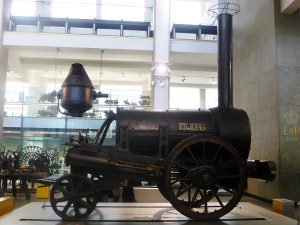Introduction:
In the annals of technological history, few inventions have had as profound an impact as the steam locomotive. At the forefront of this revolution stands the iconic Stephenson Rocket, a groundbreaking marvel that not only transformed transportation but also ushered in a new era of industrial progress. In this article, we delve into the fascinating story of the Stephenson Rocket, exploring its origins, innovations, and enduring legacy.
Genesis of the Rocket:
The birth of the Stephenson Rocket can be traced back to the early 19th century in England, a time when the demand for more efficient transportation solutions was escalating. George Stephenson, an ingenious engineer known for his work in improving steam engines, collaborated with his son Robert Stephenson to design a locomotive that would redefine the landscape of transportation. In 1829, their creation, the Stephenson Rocket, made its historic debut.
Innovations that Drove Revolution:
The Stephenson Rocket was not just a train; it was a manifestation of cutting-edge engineering and innovative design. One of its key advancements was the use of a multi-tubular boiler, a revolutionary departure from traditional locomotive designs. This boiler, which featured multiple small tubes for increased surface area, significantly improved the efficiency of steam production, allowing the Rocket to achieve unprecedented speeds.
Moreover, the Rocket introduced the novel concept of exhaust steam directing, where exhaust steam from the cylinders was channeled up the chimney, creating a draft that enhanced combustion and increased efficiency. This innovation marked a paradigm shift in locomotive technology, setting the standard for future steam engines.
Triumph at the Rainhill Trials:
The true test of the Stephenson Rocket’s capabilities came during the Rainhill Trials of 1829, a competition organized to determine the most suitable locomotive design for the Liverpool and Manchester Railway. Facing stiff competition from other locomotives, the Rocket emerged victorious, showcasing its exceptional speed, efficiency, and reliability. This triumph at Rainhill solidified the Rocket’s reputation as the pinnacle of steam locomotion and secured its place in history.
Impact on Transportation:
With its success at the Rainhill Trials, the Stephenson Rocket became the blueprint for steam locomotives worldwide. The Liverpool and Manchester Railway, where the Rocket was initially deployed, became the first fully operational passenger railway, transforming the way people and goods were transported. The Rocket’s unparalleled efficiency and speed opened up new possibilities for trade, travel, and industrial expansion, laying the foundation for the rapid development of railway networks globally.
Enduring Legacy:
The legacy of the Stephenson Rocket extends far beyond its initial triumphs. As the progenitor of modern steam locomotives, the Rocket inspired countless engineers and entrepreneurs to further refine and innovate railway technology. Its design principles influenced subsequent generations of locomotives, leading to the development of faster, more powerful, and more reliable trains.
Preservation and Commemoration:
Despite the relentless march of progress, efforts have been made to preserve and commemorate the Stephenson Rocket. The original locomotive is displayed at the Science Museum in London, allowing visitors to marvel at the engineering brilliance that shaped the Industrial Revolution. Replicas and models of the Rocket can also be found in museums and heritage railways, ensuring that its legacy endures for future generations.
Conclusion:
The Stephenson Rocket stands as an enduring symbol of innovation, engineering prowess, and the transformative power of technology. Its impact on the world of transportation cannot be overstated, as it laid the tracks for a new era of connectivity and progress. As we reflect on the legacy of the Stephenson Rocket, we celebrate not only its historical significance but also the indelible mark it left on the course of human civilization.








